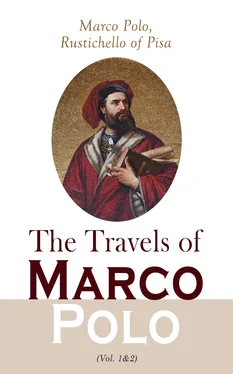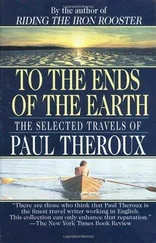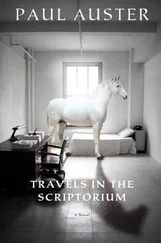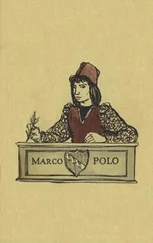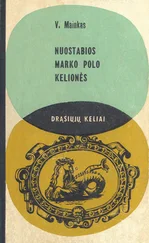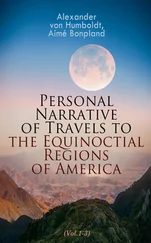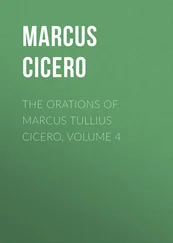In the following year, 1842, Yule was transferred to the irrigation canals of the north-west with head-quarters at Kurnaul. Here he had for chief Captain (afterwards General Sir William) Baker, who became his dearest and most steadfast friend. Early in 1843 Yule had his first experience of field service. The death without heir of the Khytul Rajah, followed by the refusal of his family to surrender the place to the native troops sent to receive it, obliged Government to send a larger force against it, and the canal officers were ordered to join this. Yule was detailed to serve under Captain Robert Napier (afterwards F.-M. Lord Napier of Magdala). Their immediate duty was to mark out the route for a night march of the troops, barring access to all side roads, and neither officer having then had any experience of war, they performed the duty "with all the elaborate care of novices." Suddenly there was an alarm, a light detected, and a night attack awaited, when the danger resolved itself into Clerk Sahib's khansamah with welcome hot coffee![28] Their hopes were disappointed, there was no fighting, and the Fort of Khytul was found deserted by the enemy. It "was a strange scene of confusion—all the paraphernalia and accumulation of odds and ends of a wealthy native family lying about and inviting loot. I remember one beautiful crutch-stick of ebony with two rams' heads in jade. I took it and sent it in to the political authority, intending to buy it when sold. There was a sale, but my stick never appeared. Somebody had a more developed taste in jade. … Amid the general rummage that was going on, an officer of British Infantry had been put over a part of the palace supposed to contain treasure, and they—officers and all—were helping themselves. Henry Lawrence was one of the politicals under George Clerk. When the news of this affair came to him I was present. It was in a white marble loggia in the palace, where was a white marble chair or throne on a basement. Lawrence was sitting on this throne in great excitement. He wore an Afghan choga , a sort of dressing-gown garment, and this, and his thin locks, and thin beard were streaming in the wind. He always dwells in my memory as a sort of pythoness on her tripod under the afflatus."[29]
During his Indian service, Yule had renewed and continued by letters his suit to Miss White, and persistency prevailing at last, he soon after the conclusion of the Khytul affair applied for leave to go home to be married. He sailed from Bombay in May, 1843, and in September of the same year was married, at Bath, to the gifted and large-hearted woman who, to the end, remained the strongest and happiest influence in his life.[30]
Yule sailed for India with his wife in November 1843. The next two years were employed chiefly in irrigation work, and do not call for special note. They were very happy years, except in the one circumstance that the climate having seriously affected his wife's health, and she having been brought to death's door, partly by illness, but still more by the drastic medical treatment of those days, she was imperatively ordered back to England by the doctors, who forbade her return to India.
Having seen her on board ship, Yule returned to duty on the canals. The close of that year, December, 1845, brought some variety to his work, as the outbreak of the first Sikh War called nearly all the canal officers into the field. "They went up to the front by long marches, passing through no stations, and quite unable to obtain any news of what had occurred, though on the 21st December the guns of Ferozshah were distinctly heard in their camp at Pehoa, at a distance of 115 miles south-east from the field, and some days later they came successively on the fields of Moodkee and of Ferozshah itself, with all the recent traces of battle. When the party of irrigation officers reached head-quarters, the arrangements for attacking the Sikh army in its entrenchments at Sobraon were beginning (though suspended till weeks later for the arrival of the tardy siege guns), and the opposed forces were lying in sight of each other."[31]
Yule's share in this campaign was limited to the sufficiently arduous task of bridging the Sutlej for the advance of the British army. It is characteristic of the man that for this reason he always abstained from wearing his medal for the Sutlej campaign.
His elder brother, Robert Yule, then in the 16th Lancers, took part in that magnificent charge of his regiment at the battle of Aliwal (Jan. 28, 1846) which the Great Duke is said to have pronounced unsurpassed in history. From particulars gleaned from his brother and others present in the action, Henry Yule prepared a spirited sketch of the episode, which was afterwards published as a coloured lithograph by M'Lean (Haymarket).
At the close of the war, Yule succeeded his friend Strachey as Executive Engineer of the northern division of the Ganges Canal, with his head-quarters at Roorkee, "the division which, being nearest the hills and crossed by intermittent torrents of great breadth and great volume when in flood, includes the most important and interesting engineering works."[32]
At Roorkee were the extensive engineering workshops connected with the canal. Yule soon became so accustomed to the din as to be undisturbed by the noise, but the unpunctuality and carelessness of the native workmen sorely tried his patience, of which Nature had endowed him with but a small reserve. Vexed with himself for letting temper so often get the better of him, Yule's conscientious mind devised a characteristic remedy. Each time that he lost his temper, he transferred a fine of two rupees (then about five shillings) from his right to his left pocket. When about to leave Roorkee, he devoted this accumulation of self-imposed fines to the erection of a sun-dial, to teach the natives the value of time. The late Sir James Caird, who told this legend of Roorkee as he heard it there in 1880, used to add, with a humorous twinkle of his kindly eyes, "It was a very handsome dial."[33]
From September, 1845, to March, 1847, Yule was much occupied intermittently, in addition to his professional work, by service on a Committee appointed by Government "to investigate the causes of the unhealthiness which has existed at Kurnal, and other portions of the country along the line of the Delhi Canal," and further, to report "whether an injurious effect on the health of the people of the Doab is, or is not, likely to be produced by the contemplated Ganges Canal."
"A very elaborate investigation was made by the Committee, directed principally to ascertaining what relation subsisted between certain physical conditions of the different districts, and the liability of their inhabitants to miasmatic fevers." The principal conclusion of the Committee was, "that in the extensive epidemic of 1843, when Kurnaul suffered so seriously … the greater part of the evils observed had not been the necessary and unavoidable results of canal irrigation, but were due to interference with the natural drainage of the country, to the saturation of stiff and retentive soils, and to natural disadvantages of site, enhanced by excess of moisture. As regarded the Ganges Canal, they were of opinion that, with due attention to drainage, improvement rather than injury to the general health might be expected to follow the introduction of canal irrigation."[34] In an unpublished note written about 1889, Yule records his ultimate opinion as follows: "At this day, and after the large experience afforded by the Ganges Canal, I feel sure that a verdict so favourable to the sanitary results of canal irrigation would not be given." Still the fact remains that the Ganges Canal has been the source of unspeakable blessings to an immense population.
The Second Sikh War saw Yule again with the army in the field, and on 13th Jan. 1849, he was present at the dismal 'Victory' of Chillianwallah, of which his most vivid recollection seemed to be the sudden apparition of Henry Lawrence, fresh from London, but still clad in the legendary Afghan cloak.
Читать дальше
